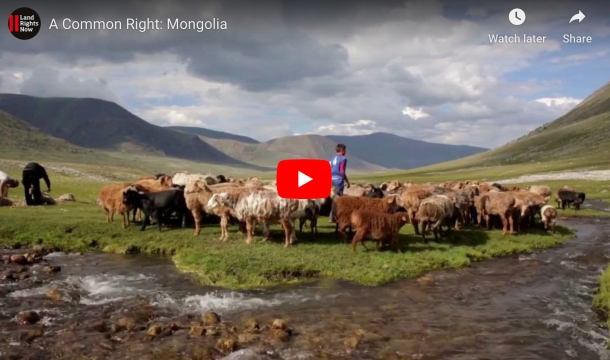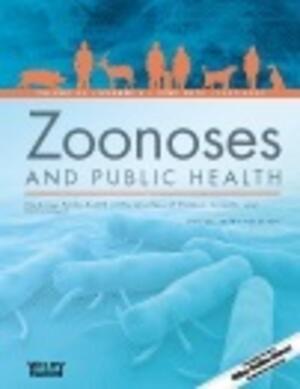
‘Drylands and Rangelands: Harnessing Change’ at Global Landscapes Forum in New York

The International Livestock Research Institute (ILRI) is delighted to announce that a session devoted to drylands and rangelands is being incorporated in the agenda of a big event of the estimable Global Landscapes Forum, which is taking place all day tomorrow, in New York City. The theme of this forum, which led by ILRI’s sister CGIAR centre, the Centre for International Forestry Research (CIFOR), is ‘Restore the Earth: Opportunities and Partnerships’.
The objectives of the forum are the following:
- With key stakeholders, lay the foundation to set the agenda of the UN Decade on Ecosystem Restoration 2021–2030
- Raise awareness of opportunities in large-scale ecosystem restoration
- Forge new, non-traditional partnerships in ecosystem restoration work
- Coordinate and increase support for ecosystem restoration
- Explore restoration needs for five ecosystems: forests/agriculture, wetlands/peatlands, mountains, drylands/rangelands, oceans/coasts
- Strengthen, expand and connect existing restoration initiatives
The session on Drylands and Rangelands: Harnessing Change is organized by the ILC’s Rangelands Initiative and will take the audience on a journey to three parts of the world—Central Asia, Africa and Latin America—to hear the stories of pastoralists and other land users living there. The challenges that these people face will be discussed together with examples of innovations that they are using to protect and restore the productivities of drylands and rangelands for local and national economies, food production and biodiversity conservation.
The dearth of good data on rangelands and drylands will be highlighted, and a pathway mapped out for drawing sufficient attention to, and investment in, rangelands and drylands through the UN Decade of Ecosystem Restoration.
A synopsis of what the six presenters will say tomorrow follows.
Fiona Flintan, a senior ILRI scientist who coordinates the Rangelands Initiative of the International Land Coalition (ILC), will introduce the half-hour session, which starts at 16:05 New York time and will be live-streamed.
‘Rangelands and drylands still invoke romantic images of wide-open spaces of wilderness inhabited by wild animals and primitive cattle keepers. In reality these ecosystems are being used in multiple ways by the billions of people whose lives depend on them.
These landscapes are complex and challenging, and require governance and management approaches that are quite different from crop farming and forest landscapes, in order to harness their full potential.
‘Like many of the ecosystems you have heard about today, rangelands are under pressure and degraded, as a result of a complicated set of reasons political, economic, social and environmental in nature. There is an urgent need for investment in their restoration with pastoralists and other land users at the centre.’
Daisy Hessenberger, a junior professional at the International Union for Conservation of Nature (IUCN), will answer the question, How much of the world’s land mass is rangelands?
‘A key starting point for large-scale restoration is understanding where rangelands are and their status. How many people here know how much of the world’s land mass is covered by rangelands?
In fact the answer is ‘we don’t know’—there is such poor information on rangelands and drylands that estimations run from 18% to 80% of the world’s land mass.
‘This highlights the need for a significant investment in collecting and consolidating data on rangelands and drylands—something that the United Nations’ Decade of Ecosystem Restoration must address as a first step.’
Sukhbold Sukhee, permanent representative of Mongolia to the United Nations in New York, will introduce the first of three short films that will be shown during the session: A Common Right: Mongolia, produced by the International Land Coalition and the Land Rights Now campaign.
‘Rangelands and drylands predominate Mongolia’s landscape, shaping the livelihoods and culture of our people who have grown to adapt and depend upon these environments, mainly through pastoralism. As of 2017, one-third of our national labor force was employed in pastoral agriculture, with the sector contributing close to 10 per cent of the country’s exports and a quarter of its GDP. Within the agriculture sector, over 80% of total production comes from the traditional pastoral livestock sector. This consists of more than 66 million heads of livestock grazing across nearly three quarters of the country’s territory.
This is why the Government of Mongolia is calling for a United Nations’ designated International Year of Rangelands and Pastoralists.
‘Keeping our rangelands healthy is critical for supporting the valuable services this ecosystem provides, from nutrient cycling, oxygen production to biological diversity and soil formation. This film takes you to the heart of Mongolia’s rangelands, showing the challenges being faced, and what can be done to overcome them.’
Umar Sule, a Mbororo pastoralist and member of the non-governmental organization Mbororo Social and Cultural Development Association (MBOSCUDA), in Cameroon, will introduce the second short film: ‘Pasture Improvement and Paddocking’, produced by MBOSCUDA, Forest Farming and Virginia Tech.
‘In sub-Saharan Africa, pastoralism is a livelihood that supports millions of people. However, it has been politically and economically marginalized, and pastoralists often have poor access to tenure security, social and extension services. In Cameroon, pastoralists face these challenges on a daily basis. I am a member of an organization called MBOSCUDA that works with Mbororo pastoralists in Cameroon to secure their land rights so that they can continue this important livestock production system. The Mbororo tribe in Cameroon are herders by tradition. We have been supporting pastoralists to change their practices for the better including creating paddocks for communal use of cows. At the same time, we have been researching forage growth and nutrition for cattle. We hope that this will lead to improved relations between farmers and herders.’
And Gabriel Seghezzo, director of Fundapaz Argentina and coordinator of the Latin America Semiarid Platform, will introduce the third short film: ‘Chihuahuan Desert Grasslands of Mexico’, produced by the Bird Conservancy of the Rockies.
‘In this last film we travel to Mexico. Like many countries in Latin America, the environment is predominantly dry. This creates a number of challenges for land use, including ensuring adequate water supply for agriculture. In the Semiarid Platform of the International Land Coalition, we are working with local communities not only to address these challenges, but also to secure their land rights and invest in sustainable land management activities. This uplifting film takes us to the desert grasslands of Chihuahua, Mexico, where we will hear about the restoration and land management work of the Bird Conservancy of the Rockies, who collaborate with private landowners from western North America, across the Great Plains up to Mexico. They support working ranches, improving landscape productivity through a holistic management while also enhancing grassland habitat for birds and other wildlife.’
Paolo Agostini, lead environmental economist for Environment and Natural Resources Global Practice at the World Bank, will give closing remarks.
For more information about the International Land Coalition Rangelands Initiative, please go to this project brochure.
For further information, please contact Fiona Flintan at f.flintan [at] cgiar.org.


















